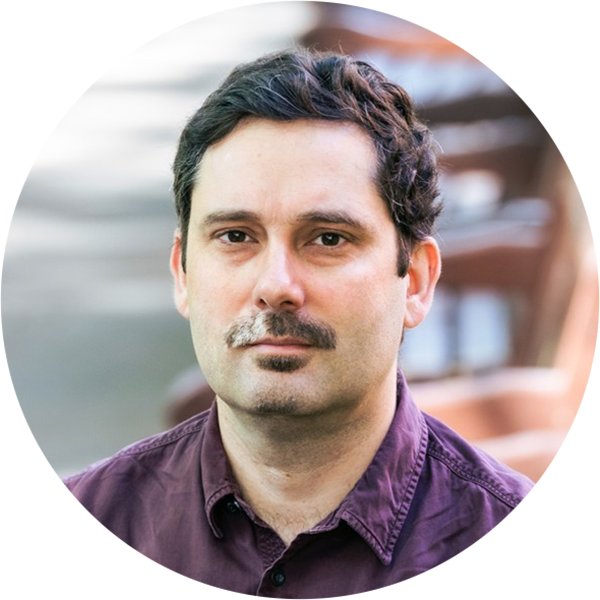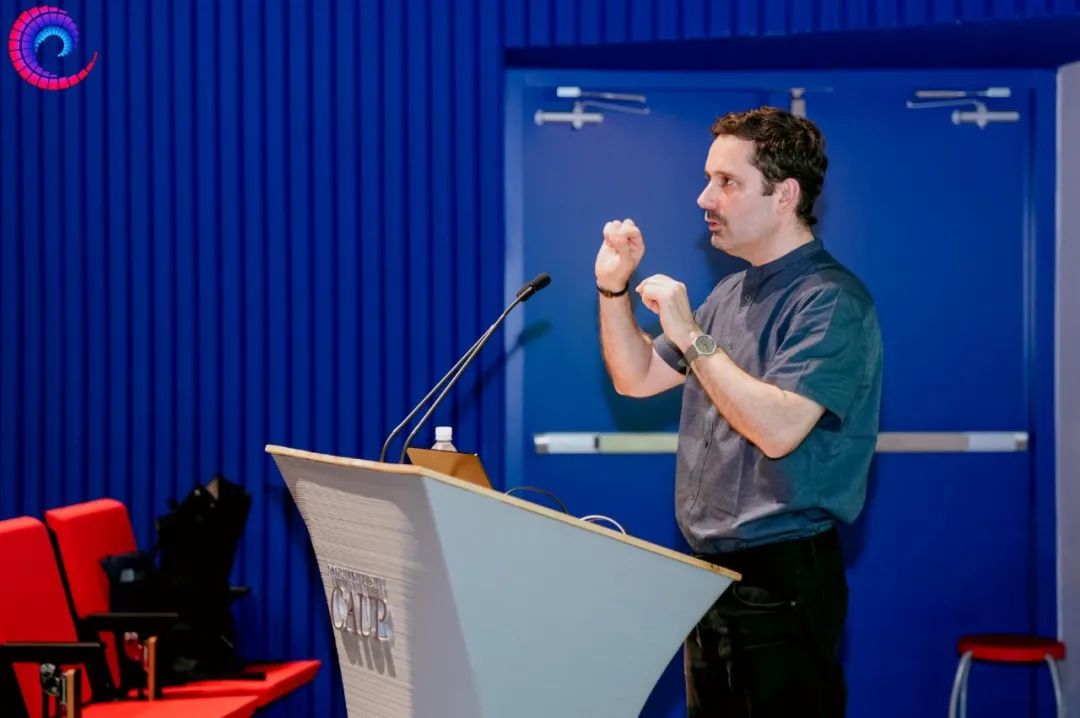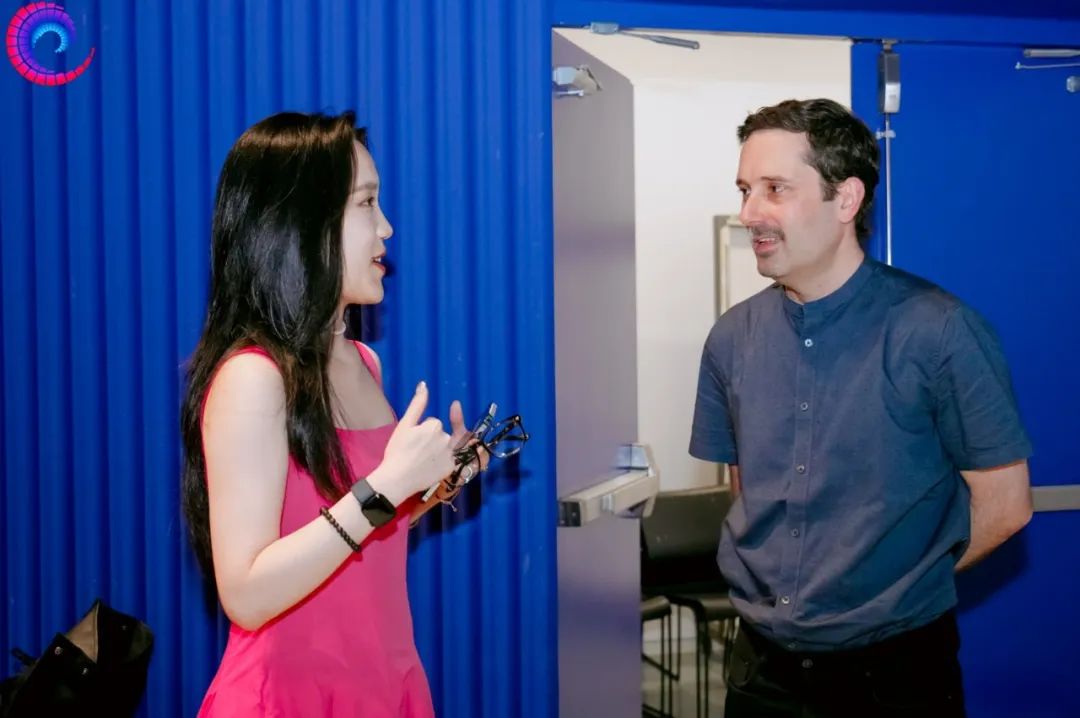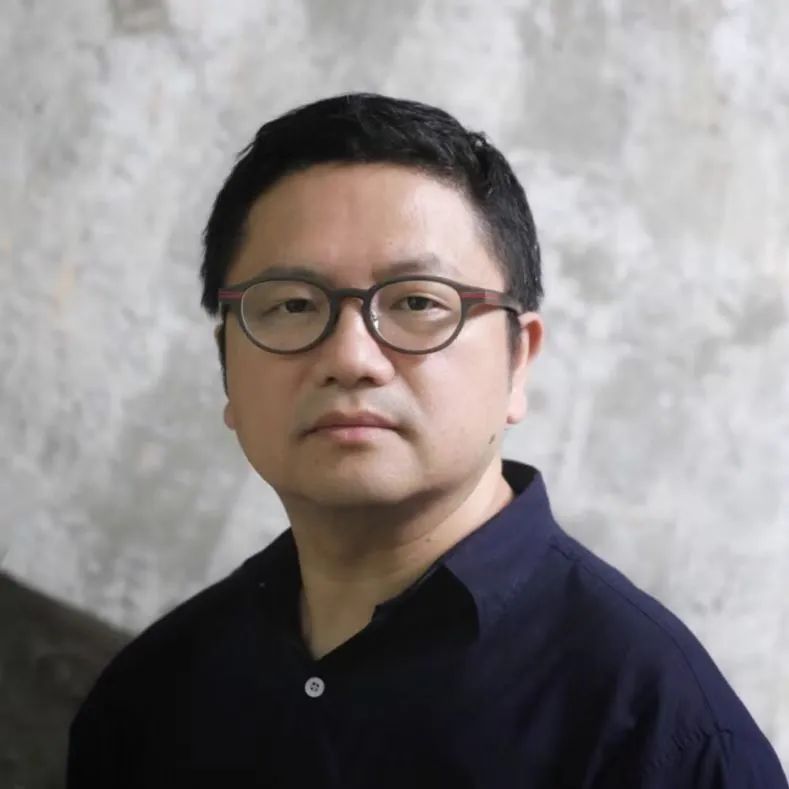
On June 29, 2025, during the DigitalFUTURES event, Kostas Grigoriadis,an architect, Associate Professor at University College London, and Deputy Editor - in - Chief of *Architectural Intelligence*, delivered a keynote speech in the Zhongting Report Hall on the 2nd floor of Building B, College of Architecture and Urban Planning, Tongji University. Subsequently, Kostas Grigoriadis held an ARI Editorial Board Forum with Yuan Feng, Vice Dean of the College of Architecture and Urban Planning at Tongji University, Mario Carpo, Professor of the Rayner Banham Chair at The Bartlett School of Architecture, University College London, and Nic Bao, Senior Lecturer in Architecture at the Royal Melbourne Institute of Technology. The forum was hosted by Chai Hua, Associate Professor at the College of Architecture and Urban Planning, Tongji University.
Kostas Grigoriadis
Architect
Associate Professor, The Bartlett School of Architecture, University College London (UCL)
Director, Continuum Design and Architecture Office
Associate Editor of Architectural Intelligence
Dr. Kostas Grigoriadis is a registered architect and scholar, Associate Editor of Architectural Intelligence, whose research focuses on the innovative significance of multi-material applications in architecture for spatial and theoretical advancements, as well as the new paradigm of spatial and material continuity thus engendered. He currently serves as an Associate Professor and Co-Director of the MArch Architecture (ARB/RIBA Part 2) program at The Bartlett School of Architecture, University College London (UCL), and as the Director of Continuum Design and Architecture Office. He has previously worked at Foster + Partners and Populous, taught at the Architectural Association School of Architecture, and served as a Visiting Lecturer at the Royal College of Art in London. In 2019, he became a Google Research Fellow in the Built Environment. He is the editor-in-chief of Hybrid Agendas: A Compendium for Multi-Material Design (Jovis Verlag, 2016) and co-author of 3D Printing and Material Extrusion in Architecture: A Construction and Design Handbook (DOM Publishers, 2024). His awards include the 2014 eCAADe Ivan Petrovic Award, the 2016 Arup Special Nomination at the Royal College of Art Summer Exhibition, the 2018 RIBA President's Award for Research in Design and Technology, and the 2022 Best Paper Award from Frontiers of Architectural Research.
Keynote Speech | Kostas Grigoriadis
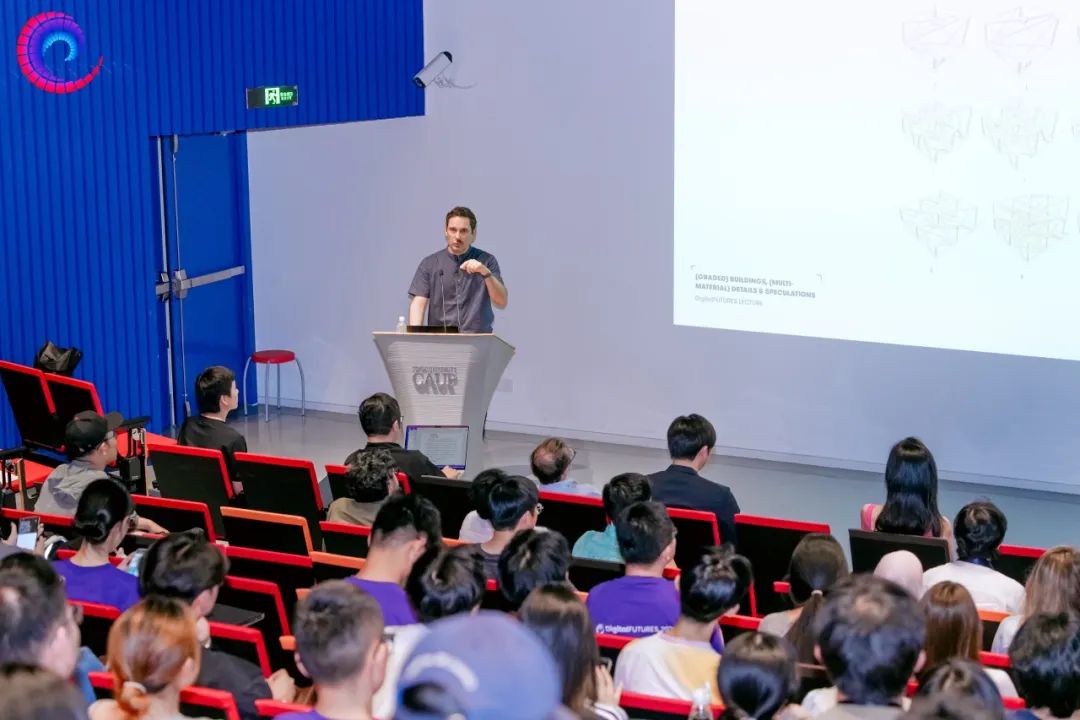
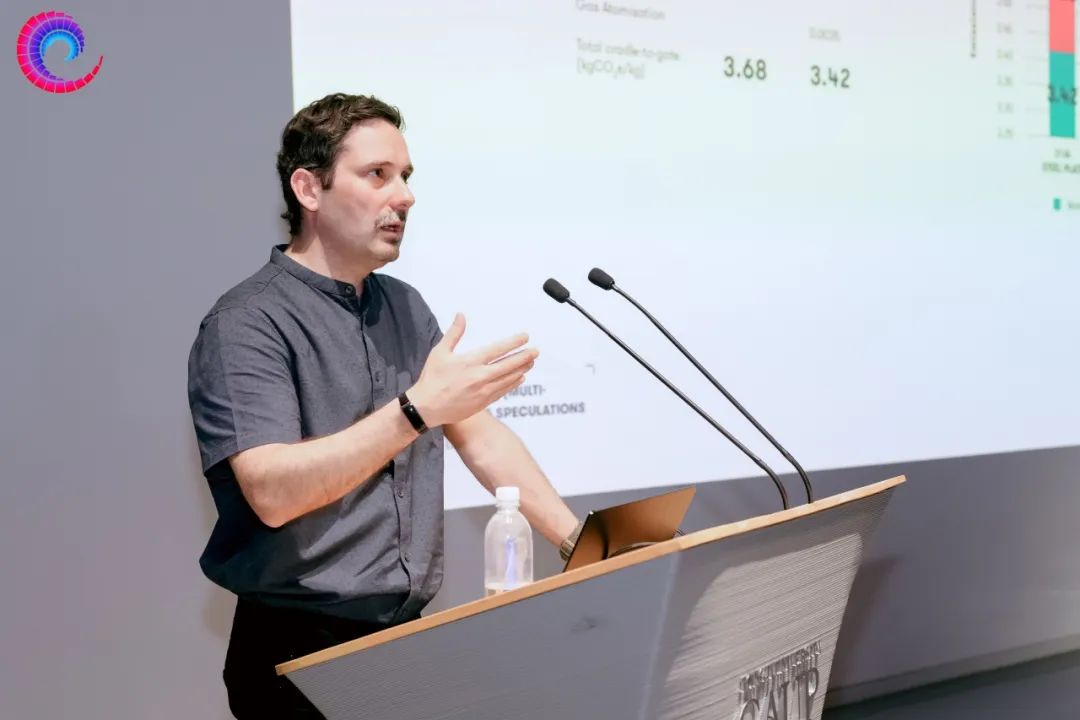
In this lecture, Professor Kostas Grigoriadis presented a series of his architectural design works and scientific research paper achievements focusing on multi-material construction. Starting with two landing projects, the Cozoo Tourist Centre and the New Z Pavilion, Professor Kostas Grigoriadis discussed how he integrated multi-material construction and digital design and construction into real projects. He also focused on the detailed of buildings, exploring the topological optimization of metal brackets connecting building curtain wall panels to floor slabs, reducing their mass and achieving more uniform stress distribution through optimized bracket design, and analyzing their implied carbon emissions. In the research of multi-metal materials, the professor proposed the Multi-Metal Topology Optimization (MMTO) method, aiming to achieve structural performance optimization of multiple metal composite materials through computational design. Kostas proposed that multi-material or functionally graded material systems composed of one or more materials through gradient fusion are expected to break through the historical tradition of architecture construction that has focused on discrete component assembly since ancient times, achieving seamless material connection and gradual performance change. In the Google Architectural Environment Research Fund and multi-functional material printing research, he further demonstrated the revolutionary impact of digital technology on traditional construction logic. Multi-Material Printing achieves structural performance optimization of composite materials through computational design and advanced manufacturing technologies, collectively reflecting the structural innovation of digital technology on traditional material construction logic. Finally, Kostas Grigoriadis also showed how he integrated these research achievements into teaching at UCL. Through the integration of multi-material construction, topological optimization, and digital design technologies, Professor Kostas Grigoriadis' research not only promotes the innovation of architectural structural performance and sustainability but also breaks through the limitations of traditional discrete construction models, presenting a new design paradigm from material gradients to building systems. These interdisciplinary explorations not only provide innovative solutions for industry practice but also cultivate the next generation of architectural pioneers through education, demonstrating the changes and impacts of digital technology on the material logic and construction techniques of architecture.
Editorial session of Architectural Intelligence
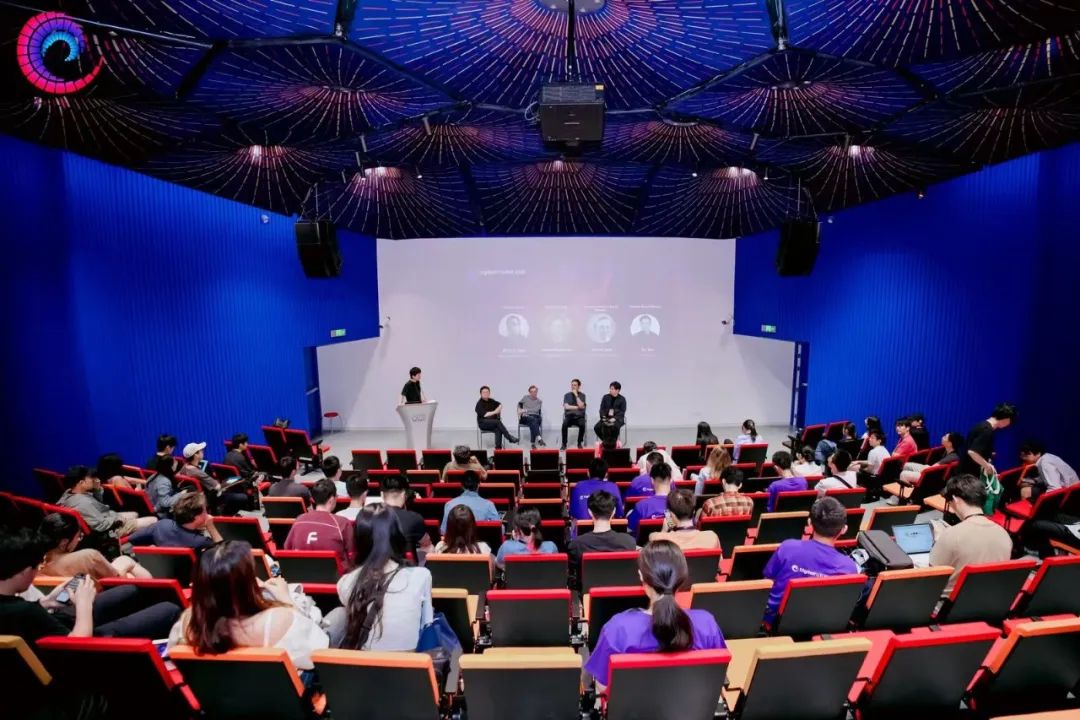
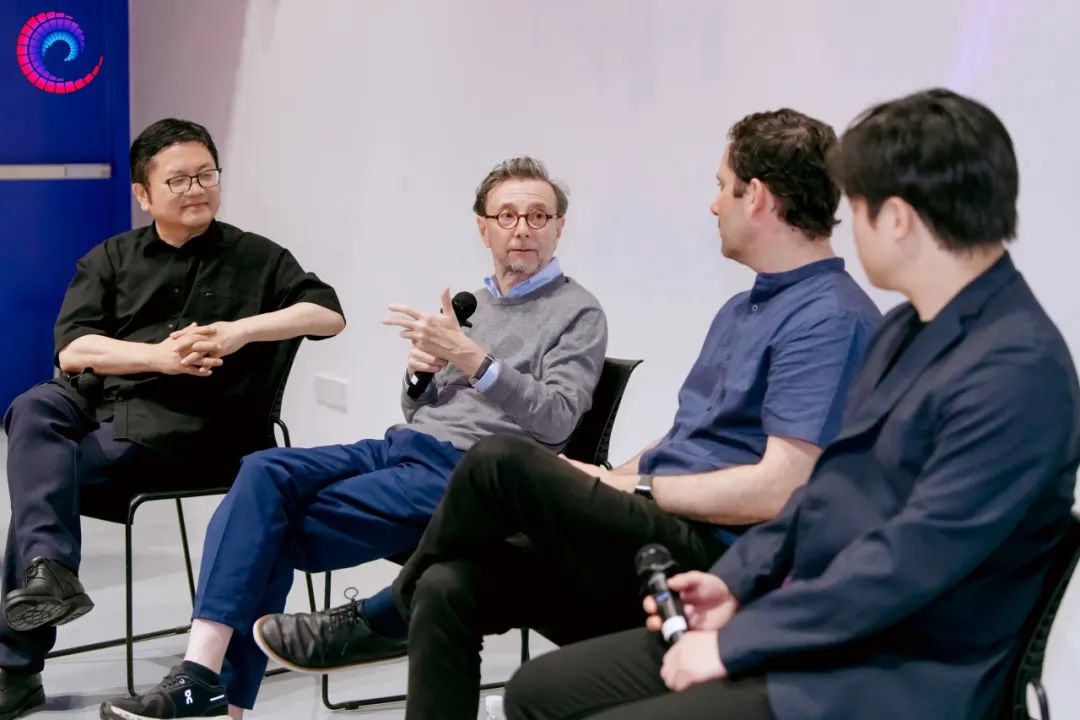
Kostas Grigoriadis
Architect
Associate Professor, The Bartlett School of Architecture, University College London (UCL)
Director, Continuum Design and Architecture Office
Associate Editor of Architectural Intelligence
Mario Carpo
Reyner Banham Professor of Architectural History and Theory at the Bartlett School of Architecture, University College London
Peak Chair Professor at the College of Architecture and Urban Planning, Tongji University
Nic Bao
Registered Architect
Senior Lecturer in Architecture, RMIT University
Philip F. Yuan
Vice Dean of the School of Architecture and Urban Planning, Tongji University
National Talent Distinguished Professor
Hua Chai
Associate Professor, CAUP, Tongji University
Guests of the editorial board forum included ARI journal editor-in-chief Philip F. Yuan, Associate editor Kostas Grigoriadis, academic editorial board member Mario Carpo, and editorial board member Nic Bao, and the forum was hosted by the journal's managing editor Chai Hua. The discussion focused on the evolution of building materials and construction methods, emphasizing the shift from standardized industrial materials to variable property materials. The conversation highlighted the challenges of assembly with standardized parts and the potential of robotics and computational tools to achieve precise, intelligent variability in building materials. The importance of process research, multi-material control, and the integration of AI in architecture was underscored. The need for peer-reviewed publications and the potential of digital platforms for disseminating architectural ideas were also discussed, along with the challenges of integrating rigorous research into design education.
Professor Mario Carpo first noted that the intelligent variability of building materials—a concept systematically eliminated by industrial standardization—now stands to be revived through advanced robotics and computational technologies. In a passionate speech on the evolution of construction, he drew on personal experiences to illustrate how modern technology is reviving the exquisite craftsmanship lost in the process of industrial standardization. Mario skillfully used anecdotes of local builders adeptly adjusting concrete mixtures to specific structural requirements, demonstrating how traditional craftsmanship embodied a nuanced understanding of material properties often overlooked in modern engineering. He argued that robotic fabrication and computational tools now enable a return to intelligent material variability, once achieved by master builders through intuitive expertise. Critically analyzing technological trends, he distinguished between generative AI and computer-driven automation, warning against current AI hype while advocating a more deliberate approach to technological innovation.
Regarding journal operations, Mario emphasized the importance of maintaining peer-reviewed academic publishing to ensure the quality and reliability of scholarly discourse. While acknowledging the rise of generative AI, he cautioned against conflating it with automation, noting that the two serve distinct purposes. Mario also highlighted the challenges of disseminating ideas in an era where digital platforms like YouTube often overshadow traditional print publications. He proposed curating a series of 15-minute mini-lectures in a standardized format supervised by renowned institutions to bridge the gap between academic rigor and accessibility. This approach, he believed, could create a dynamic encyclopedia of architectural ideas while upholding academic integrity.
Kostas Grigoriadis comprehensively explored the technological frontiers in architectural research, focusing on the potential and limitations of AI applications in architecture and design. He critically examined the current state of multi-material research, emphasizing the challenges of integrating diverse materials and technologies. Drawing on his experience at University College London (UCL), Kostas discussed the difficulties of transforming student design work into rigorous academic publications and proposed structured methods to encourage research among young scholars. His speech highlighted the critical intersection of sustainability, digital technology, and architectural design, advocating for interdisciplinary collaboration and innovative research methods to address complex environmental challenges.
Concerning the journal, Professor Grigoriadis focused on ARI’s interdisciplinary potential, advocating for scientists, engineers, and architects to contribute collectively to solving complex topics like multi-material structures and AI applications. He noted the difficulty of translating speculative design projects into publishable research due to their wide scope and lack of deep rigor. Professor Grigoriadis also emphasized the need to attract young scholars by improving paper quality and using conferences to identify promising research. He proposed structuring academic programs to include dedicated research phases, enabling students to create publishable content while balancing design-focused curricula.
Professor Yuan Feng’s remarks centered on the transformative potential of technological innovation in architectural design and education. He outlined a vision of architecture evolving from a human-centered discipline to a tool-driven field, where computational technology enables unprecedented precision in material control and design. Professor Yuan emphasized the importance of craftsmanship research and multi-material technologies, exploring how scientific thinking and interdisciplinary approaches are revolutionizing architectural practice. He stressed the significance of understanding material properties at different scales, citing the work of leading researchers like Neri Oxman. His speech advocated for a systematic understanding of architectural knowledge, highlighting the necessity of integrating advanced technologies like AI and computational design into educational and research frameworks.
Regarding the journal, he underscored the transformative impact of digital tools and AI on architectural practice and education, calling for greater emphasis on research skills and theoretical frameworks. Professor Yuan envisions the journal as a hub for interdisciplinary collaboration, guided by associate editors from diverse fields. He also emphasized integrating multimedia content like videos to attract a broader audience and enhance the journal’s reputation.
Nic Bao’s remarks focused on strategies to enhance the influence and interdisciplinarity of architectural research publications. He proposed improving journal citations by encouraging interdisciplinary research and including researchers from diverse fields. He highlighted the potential of expanding research perspectives beyond traditional architectural boundaries, noting that interdisciplinary collaboration can make architectural research more appealing and relevant to a broader academic audience.
 ABOUT US
ABOUT US


